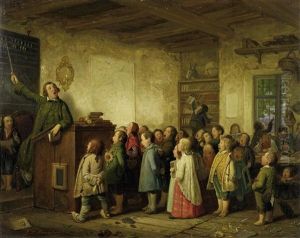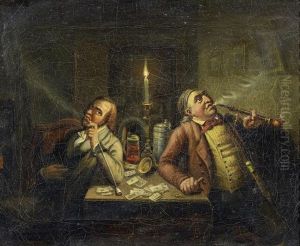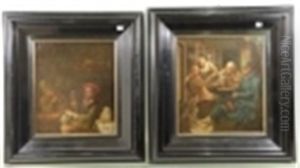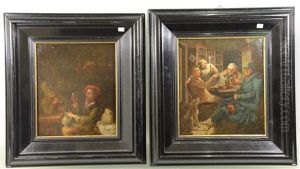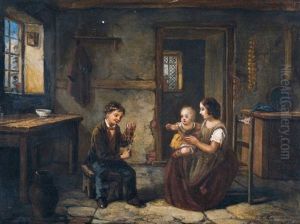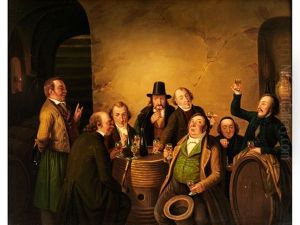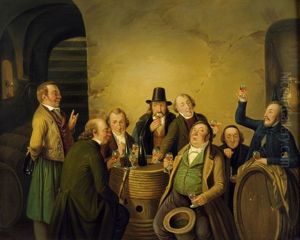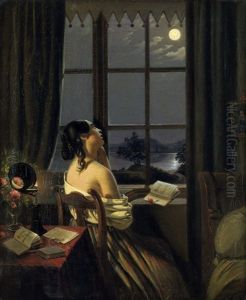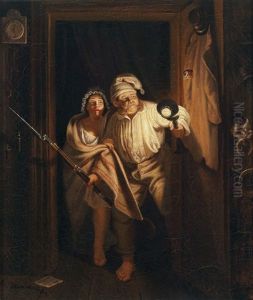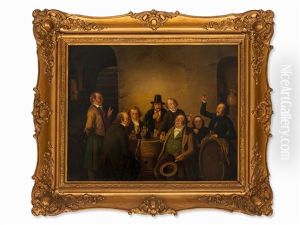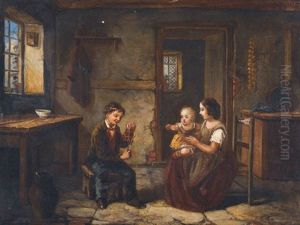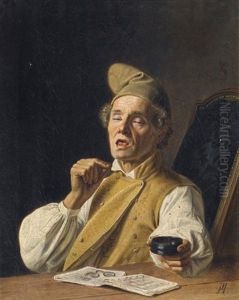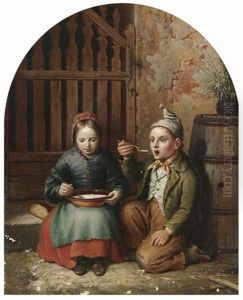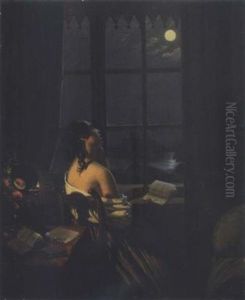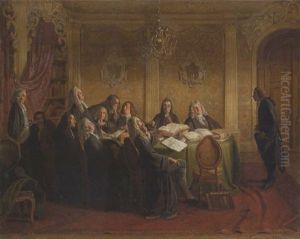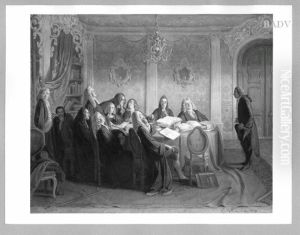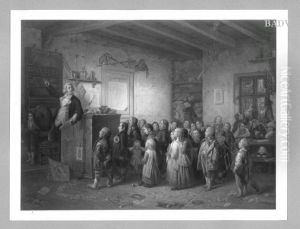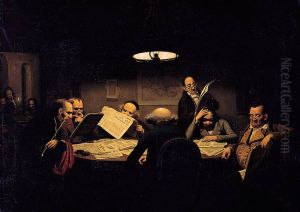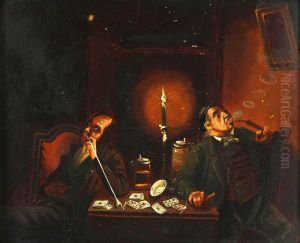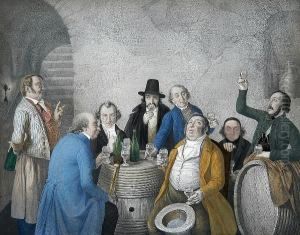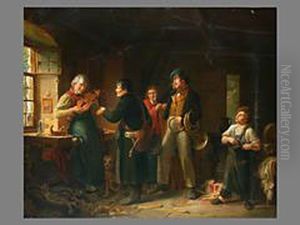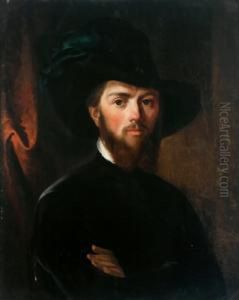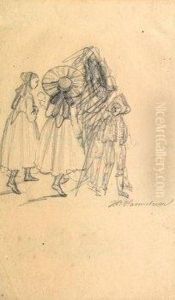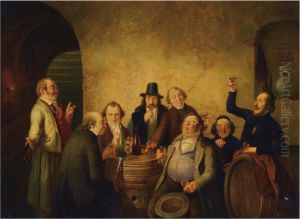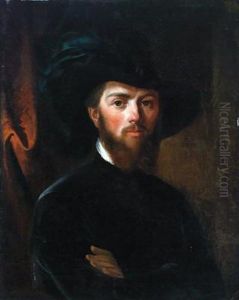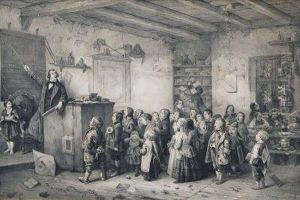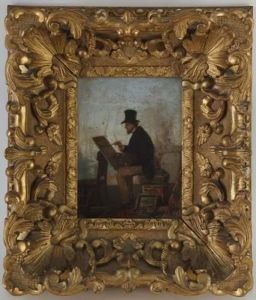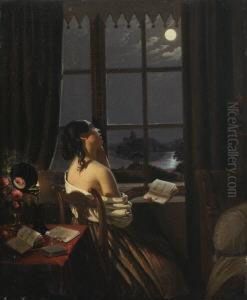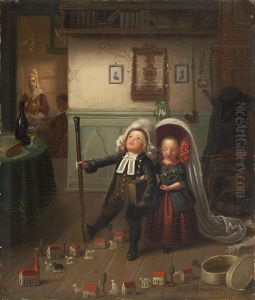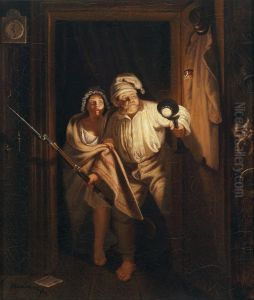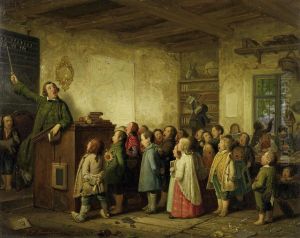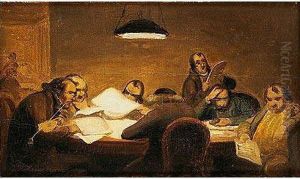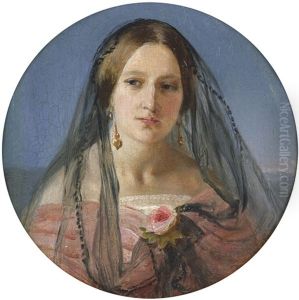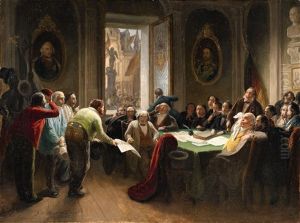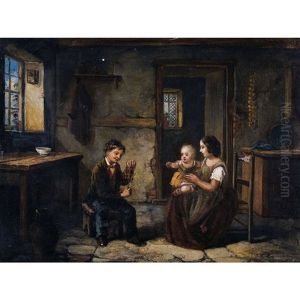Johann Peter Hasenclever Paintings
Johann Peter Hasenclever was a German painter associated with the Düsseldorf school of painting, born on May 11, 1810, in Remscheid, Germany. He is known for his genre paintings that often carried satirical and political messages, reflecting the social issues of his time. Initially, Hasenclever apprenticed in a hardware factory, but his passion for art led him to pursue a career in painting. In 1829, he began his formal art studies at the Düsseldorf Academy, one of the leading art schools in Germany, where he was influenced by the works of Wilhelm von Schadow, the director of the academy, and other prominent artists associated with the Düsseldorf school.
Hasenclever's work is characterized by its detailed realism and vivid storytelling, often infused with a keen sense of humor. His paintings typically depicted scenes from everyday life, including the bourgeoning middle class, artisans, and intellectuals, thereby providing a window into the societal dynamics of 19th-century Germany. One of his most famous works, 'The Reading Room' (1843), is a critique of the intellectual life of his time, showcasing a variety of characters engrossed in reading in a communal space, each representing different facets of society and intellectual engagement.
Throughout his career, Hasenclever was active in the political scene, participating in the Revolutions of 1848, a series of interconnected revolutionary movements across Europe. His political beliefs often found expression in his art, making bold statements on the issues of freedom, equality, and justice. Despite his political engagement, Hasenclever struggled with health issues throughout his life, which limited his productivity and ultimately led to his early death on June 5, 1853, in Düsseldorf.
Hasenclever's contribution to German art is significant, especially in the context of the Vormärz period, a time of political and social upheaval leading up to the revolutions of 1848. His works remain a critical source for understanding the cultural and social currents of his time, blending artistic excellence with social commentary. Although he died young, his legacy lives on through his influential paintings, which continue to be studied and admired for their historical value and artistic merit.
